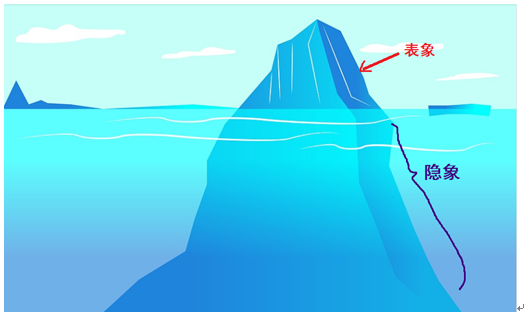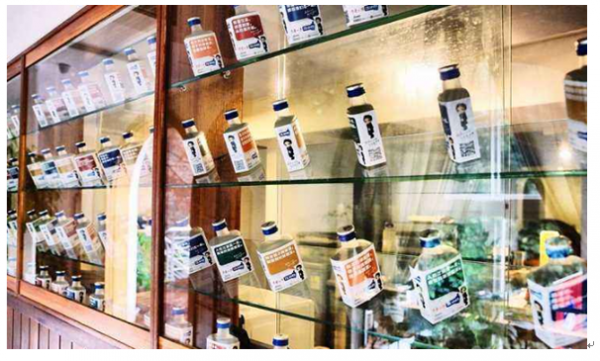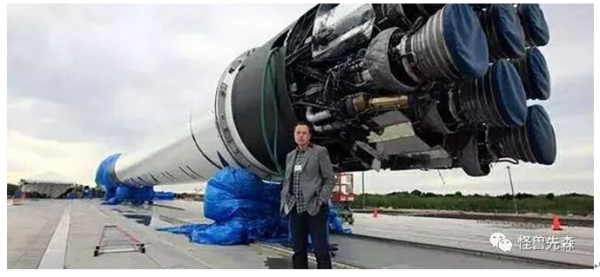Many successful products are like icebergs. You only see the side of it floating on the water, and you think that's all it succeeds. And I didn't see the vast majority of the water.
A certain product or brand becomes popular, and I see that there are always people who want to take the "shortcut" - directly imitate it.
Seeing that Jiang Xiaobai’s copywriting became popular, he also wrote the copywriting on his own bottle;
Seeing Durex's Weibo copy became popular, he also posted heartfelt copywriting every day on his official Weibo;
After seeing that the XX brand invited celebrity endorsements, it became popular and invited popular celebrities to promote their brand;
...
turn out,
If you imitate all the copywriting of Jiang Xiaobai's wine bottles word for word, you still can't compare to Jiang Xiaobai;
You post thoughtful copywriting on Weibo every day, but you are still as attractive as Durex;
You spent a lot of money to hire very popular stars, but you still couldn't bring much sales...
1. Why is this?
(If you observe carefully, you will find that this phenomenon is not an isolated case. This is always the case in the market. This is also one of the reasons why I want to write this article)
I will quote two words proposed by Xiao Ma Song here to explain this phenomenon: representation and hidden image
Appearance refers to the success factor that everyone can see or thinks; while hidden image is the success factor that everyone does not know or is ignored.
Because many successful products are like icebergs, you only see the side of it floating on the water, and you think that this is all it succeeds. And I didn't see the vast majority of the water.

The appearance of Jiang Xiaobai's success is its bottle copywriting; but the hidden image behind it is not considered, such as Jiang Xiaobai's ability to spread products to the channel capabilities of offline shopping malls and restaurants across the country and the unique product positioning behind it. Therefore, even if you are also a liquor product, you will not achieve the same successful results completely imitating Jiang Xiaobai's bottle-body copywriting.

For example, Durex's copywriting can attract everyone's attention. It is not only that the copywriting can be written with care, but also the hidden image behind the brand awareness, product strategies and other marketing methods of the condom category, and copywriting is just a manifestation and auxiliary means of Durex's success.
Just like people with the same position say the same thing in the company, some will be respected, while others will be despised - because speaking is just a superficial, and there are hidden factors behind your behavior, character, value contribution in the company, etc.
Therefore, blindly following the trend and imitating superficial things cannot make your product achieve the same effect.
Similarly, products that are easily imitated by people are difficult to gain lasting competitiveness, and are naturally easily homogenized by other products.
2. So, how can we do it to achieve similar results or form our own strong competitiveness?
I share a strategy here: links and links.
Linked together means that the product has a linked and interactive influence in various links such as product positioning, product design, price, channel, and promotion. The popular products are the result of the links being linked and linked.
For example, Jiang Xiaobai, its wine bottle copywriting is just one of its "interconnected" strategy. In addition, it also has its channel capabilities to cover various restaurants and offline supermarkets ; pricing meets the acceptance scope of its target population; product positioning differentiated (light luxury and youthfulness are the main), avoiding direct competition with well-known liquor brands such as Hongxing Erguotou, Moutai, Wuliangye, Jiannanchun Liquor, Luzhou Laojiao, Tuopailang Liquor , etc., which has led to Jiang Xiaobai's current success.

The copywriting on the wine bottle is the most easily seen among these links (the appearance of success), which leads many people to think that copywriting is the main reason for Jiang Xiaobai's success, but they do not explore other links behind Jiang Xiaobai's "linked". If you only learn one of them and don’t look at everything, it will naturally be difficult to achieve the same effect.
1. How to effectively learn from others’ success?
If we want to truly learn a successful product or brand, we cannot only see the most obvious part of it, but also explore the consistency of other interlocking links and its strategy behind it.
Then, based on your own actual situation, see if it is suitable for "imitation". For example, you can’t just look at Jiang Xiaobai’s wine bottle copywriting, but also the composition of its product positioning, channels, pricing and other links and how it coordinates and unifies each link, and then see if there is any reference for your product development.
Just like Elon Musk successfully built the Rockets, you also start a Rockets company and you may not be able to achieve the same successful results. Why? The main reason is that behind Elon Musk's successful Rockets is a linked result.
For example, Elon Musk has successfully created companies such as Paypal (similar to China's Alipay) and Tesla in the early stage, and has accumulated a large amount of start-up capital, which can be used to maintain the large amount of capital investment required to develop rockets. Some people have the same technology and dreams, but in the end they fail to achieve Elon Musk's success. The main reason is that they do not have enough financial support before they succeed (generally, projects with high risk of success can only be more people invested if they obtain certain results).

After exploring Elon Musk's "interlinked" approach, we can know that if you want to make the same great and risky product, you cannot only consider technology and dreams, but also capital and other aspects.
Therefore, learning about the success of others cannot be just a part of the generalization. It also depends on the interlocking links behind its success.
2. How to form your own strong competitiveness?
Similarly, if you want to raise the threshold for being imitated and form your own strong competitiveness, you must strengthen your "interlinked" strategy. Make all your links interlocking like chains to maintain strategic consistency.
For example, after Jiang Xiaobai determined his product strategy, he strengthened all links to form a "linked" chain (products, channels, prices, etc.), which greatly raised the threshold for being imitated and maintained his unique and strong competitiveness (this is the case at present).
Let me give you another example around you. On a commercial street near my university school, there is a Western restaurant specializing in college students, and the business is very good. How good is it? 80% of nearby restaurants go bankrupt or transfer for various reasons in less than a year, while this Western restaurant maintains a large number of customers every day. Guests who come here to dine often have to queue up, and they also attract students from nearby schools to come and spend.
When the business becomes popular, it is naturally easy for someone to follow the trend and imitate it. During this period, I saw several Western restaurants that seemed to be similar on the same commercial street, facing the same consumer groups, pricing, etc., all of which were facing bankruptcy or transfer within less than a year.
Why can this Western restaurant only maintain such strong competitiveness?
Because the store adopts interlocking strategies to form high competitive barriers, it makes it difficult for others to imitate and catch up.
This restaurant, which is very popular, has time advantages in the category of Western restaurants (first to enter this commercial street), store design, service details, employee culture (there is professional employee training every day, but other stores do not do it). Others just imitate some of the links, so it is naturally difficult to have the same effect.
Moreover, the store continues to strengthen its various aspects, maintains strategic consistency, and continuously raises the threshold for being imitated by others, so it naturally gains its own strong competitiveness.
Of course, learning the interlocking strategies of others does not mean that you have to do this, because if you want to form your own strong competitiveness, you must form your own product characteristics. Seeing the interlocking parts of others only makes you more clear about what the real success of others is, so that you can truly gain valuable inspiration from it.
Therefore, if your product becomes popular and is imitated all of a sudden, it only means that your product or brand may not adopt the "linked" strategy, and do not strengthen and increase your own competitive barriers (and may also be due to insufficient money), and will naturally be easily imitated and chased by others.
Finally, sum it up in two sentences
1. Why did you learn Jiang Xiaobai's copywriting but not achieve Jiang Xiaobai's success? The main reason is that you only see the appearance of Jiang Xiaobai's success, but you do not see the interlocking hidden images behind Jiang Xiaobai.
2. If you want to better learn from others' success, you cannot only see one thing, but also the various links and practices behind it. Similarly, if you want to form your own strong competitiveness, you need to adopt and strengthen your own interlocking strategies and practices.






![#Laogao E-commerce Newsletter# [May 30 E-commerce Morning News]](/update/1519779573l517616211.jpg)

![#Laogao E-commerce Newsletter# [May 25 E-commerce Evening News Brief]](/update/1621933693l942109764.jpg)

 EN
EN CN
CN
